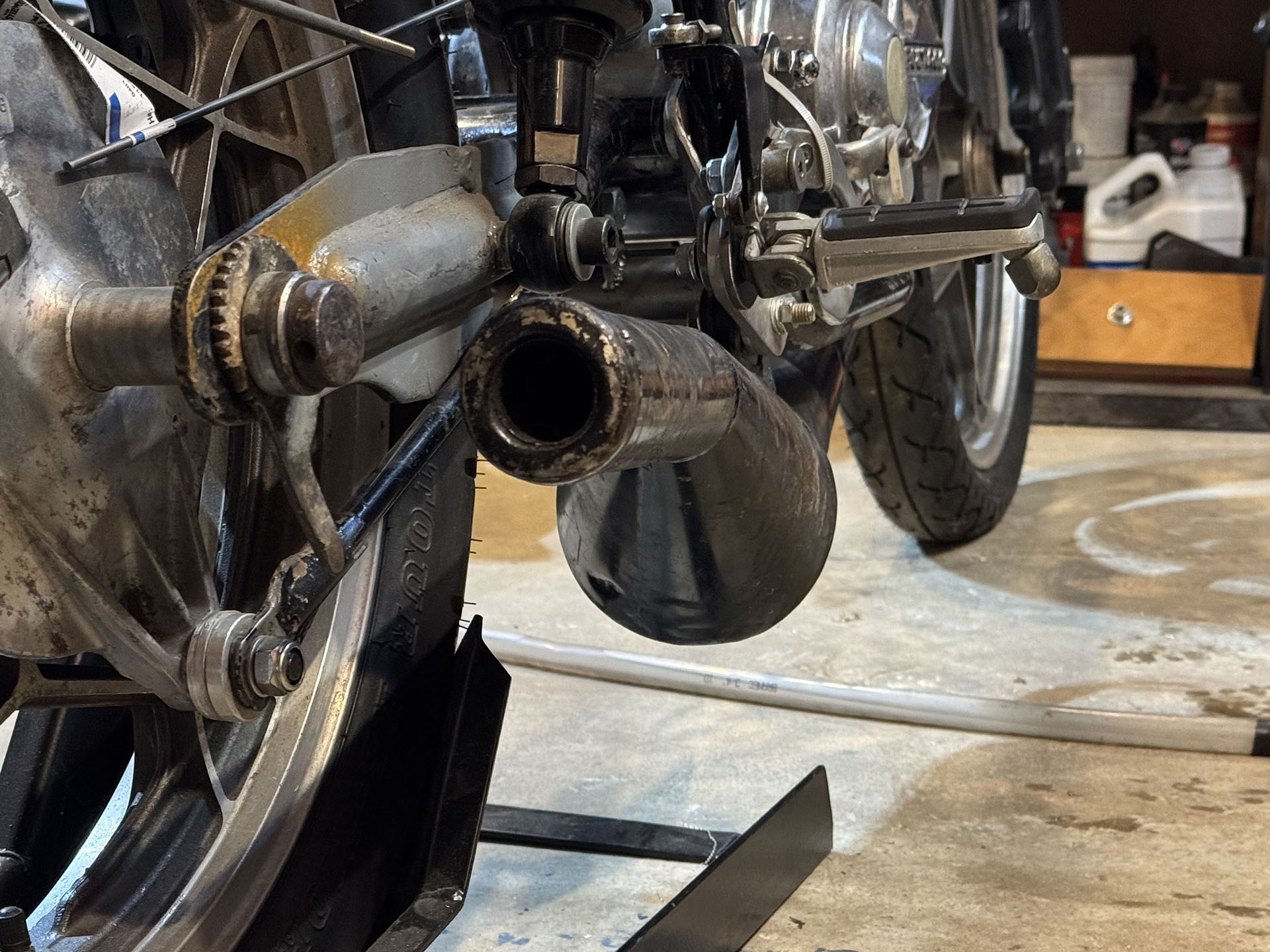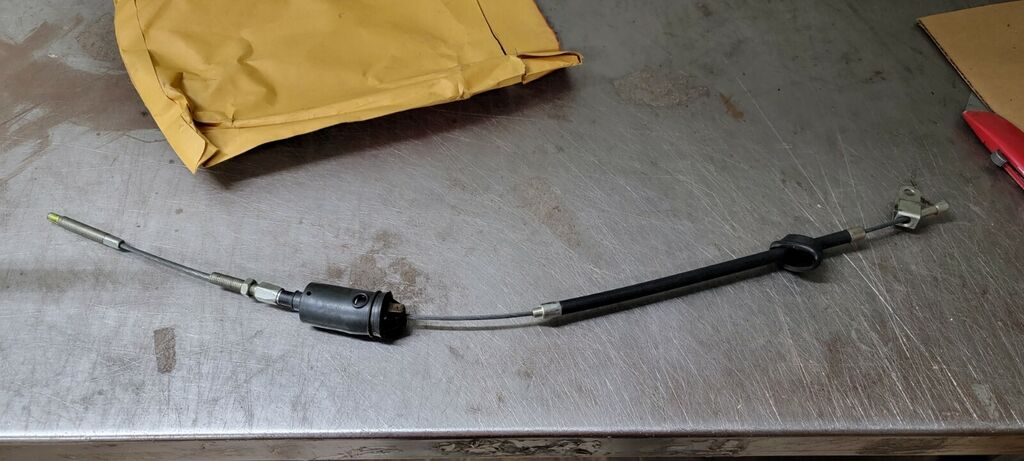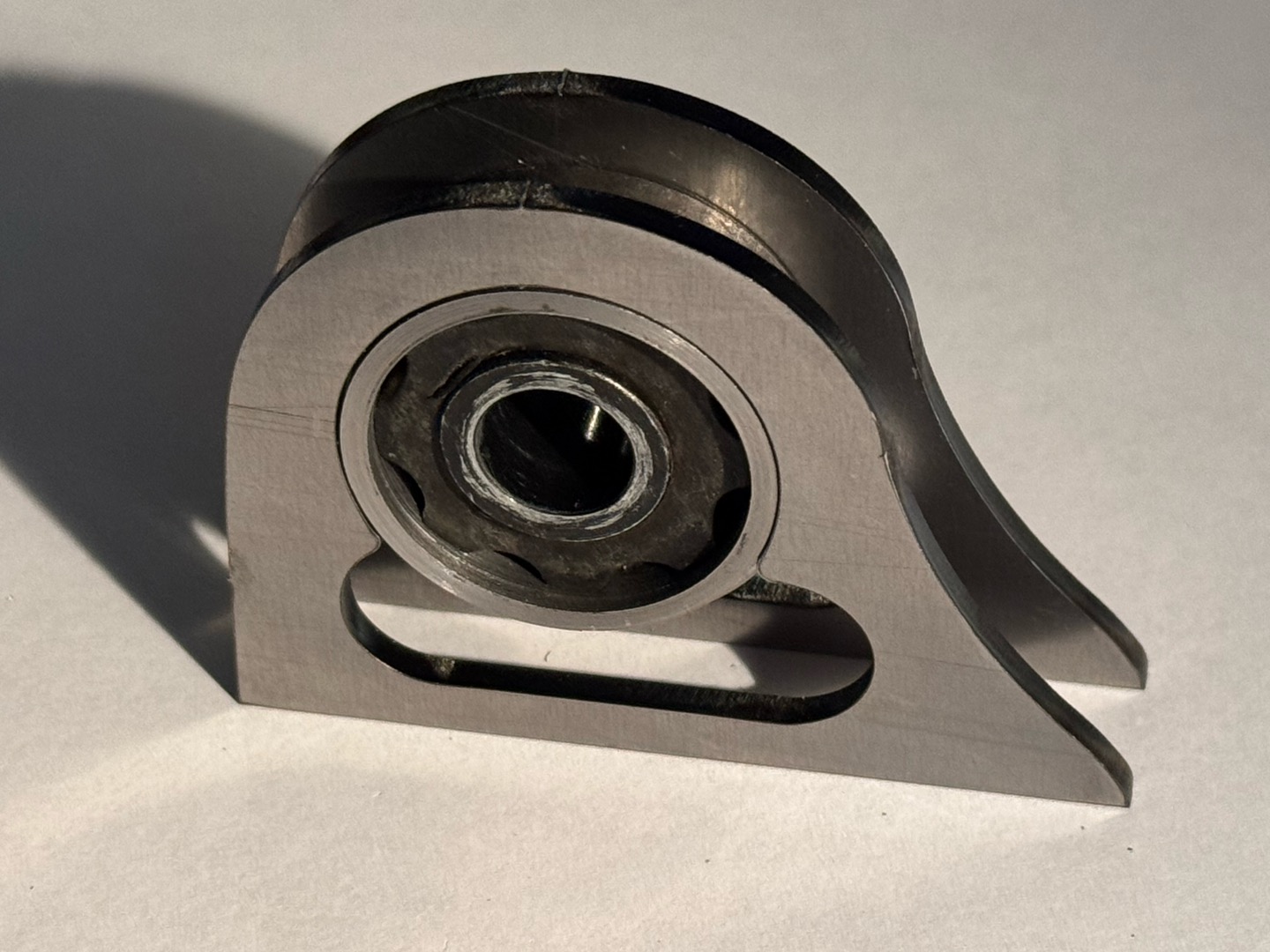I set about measuring my rake and trail numbers tonight.
My methods were not terribly accurate or scientific, but I think I have a general idea of what my setup is.
First, I set my hydraulic bike stand just high enough that it was barely supporting the bike, with both wheels on the ground.
Then I used a bubble level on various assumed horizontal and vertical frame tubes to get the bike perfectly vertical. Then, with the front wheel as accurately aligned to the centerline of the bike as I could manage, I used my cheap-o Ace Hardware angle finder to determine the rake angle.
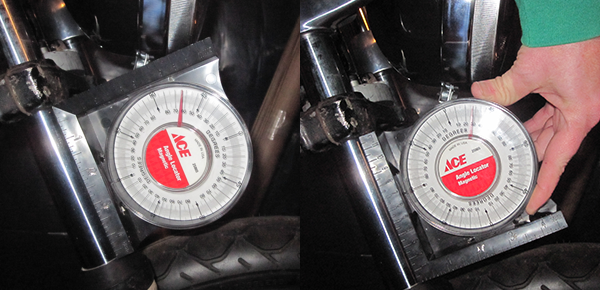
I assumed (smartly, it turns out) that my angle finder wasn’t terribly accurate, so I used both the magnetic and v-channel sides. They differed by about one degree.
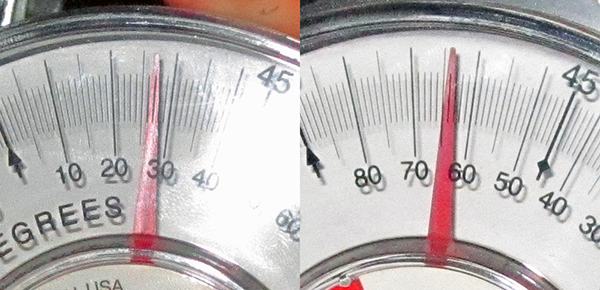
One way it read 26 degrees, the other 27. So, I’m calling it 26.5. That’s about a 1-1/2 degrees steeper than a Pursang 370 (which is what the frame is from). That made sense when I put the angle finder on the bottom engine cradle tube.
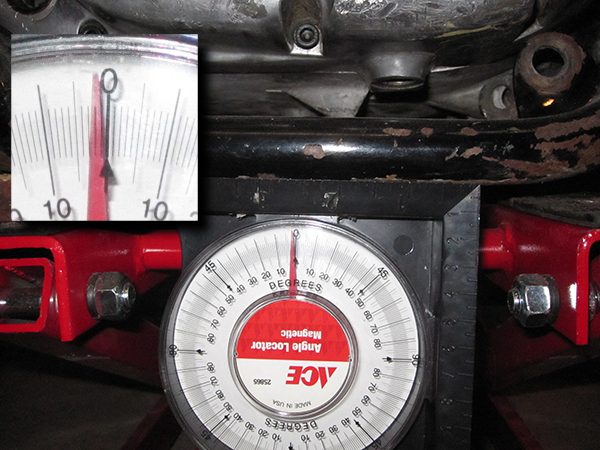
Because of the extra height in the rear due to my less-than-optimal shock, my frame is canted about 1 to 2 degrees forward, steepening the steering head angle by a like amount.
Since I have leading axle forks, steering-stem-to-axle office is somewhat hard to measure accurately. To simplify the process, I simply measured the distance from the back of the fork tubes to the center of the steering stem, a distance of 12.5 mm.
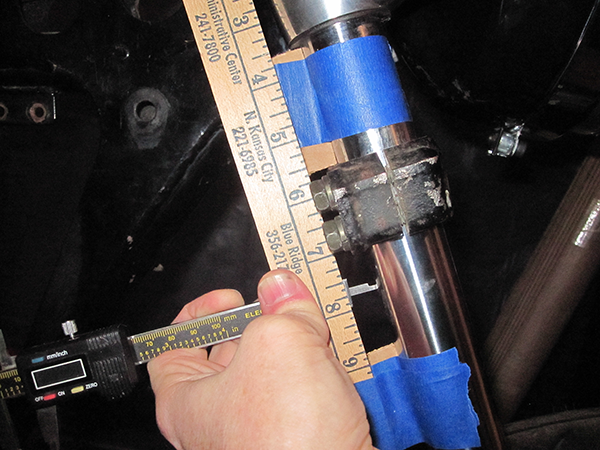
I cut three cardboard spacers that thickness as accurately as I could, and taped them along the exposed length of the right fork tube. By pressing a yardstick against the spacers, I could determine the point where the steering axis intersected the garage floor, which I marked with a Sharpie.
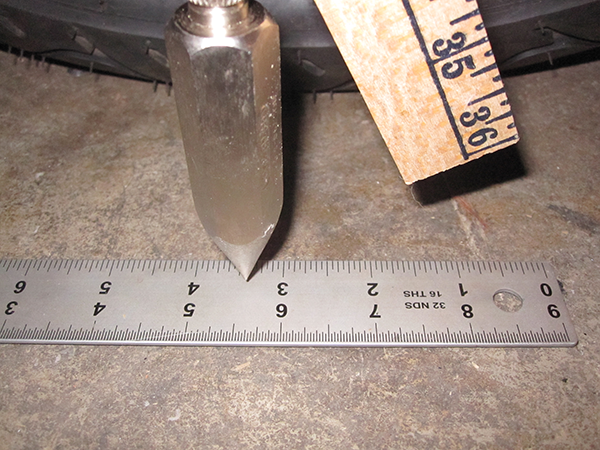
Then I hung a plumb bob through the cotter pin hole in the axle, and used a steel rule to measure the distance behind the dot on the garage floor. As you can see, the trail is 3-3/8″.
Since my methodology was pretty dodgy, I decided to use a completely different approach to verify whether my figure was in the ballpark. I grabbed my laser crosshair and mounted it to a metal duct above the bike, positioned so that one beam was along the longitudinal centerline of the bike, and the other was in plane with the steering stem axis. I simply put a caliper on top and bottom of the steering tube and verified it was passing through the mid-point. I could also see the laser on the front tire, where it was passing down through the hollow stem. I measured the laser line on the floor to the plumb bob, and it was within 1/8″ of my first measurement. So I know I’m somewhere close to correct.
As a third check, I measured my overall stem-to-axle offset (which I read as just under 2-1/2″). Then I looked up the published diameter for my front tire on the Heidenau website. I took those numbers and plugged them into to the RB Racing Rake and Trail Calculator. In order to get the calculations to work out correctly, I had to use 27 degrees as my rake figure, and then fudge my offset measurement by about a tenth of an inch, which is certainly within my measurement process’s margin of error.
My officially defined “published” specs are:
RAKE: 27 degrees
TRAIL: 3.4″
The trail number I came up is not a figure I was hoping for. It is definitely on the short end of the traditionally accepted “safe” range, normally quoted as being within 3 and 5 inches. Given that brake dive with telescoping forks can steepen the rake and decrease the trail under braking, I’d like more wiggle room. To give you a comparison, my bike has about the same amount of trail as an Aprilia RS250 roadracer. While probably not unsafe, especially given the bike’s 80 MPH top speed, this is going to be a rather twitchy, dart-y ride.
If I want to do something about this, I could slide the triple clamps up to the top of my existing forks (I currently have them extending beyond the top clamp to keep the chassis height out of dirt-bike territory and keep the frame fairly level), or swap them out for something else.
